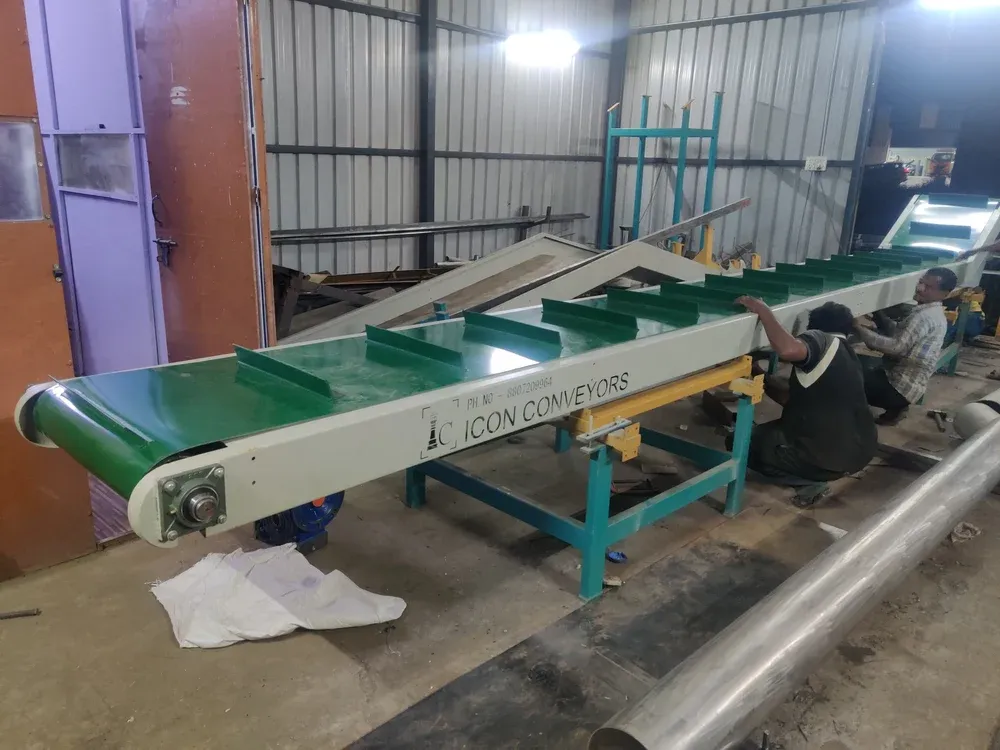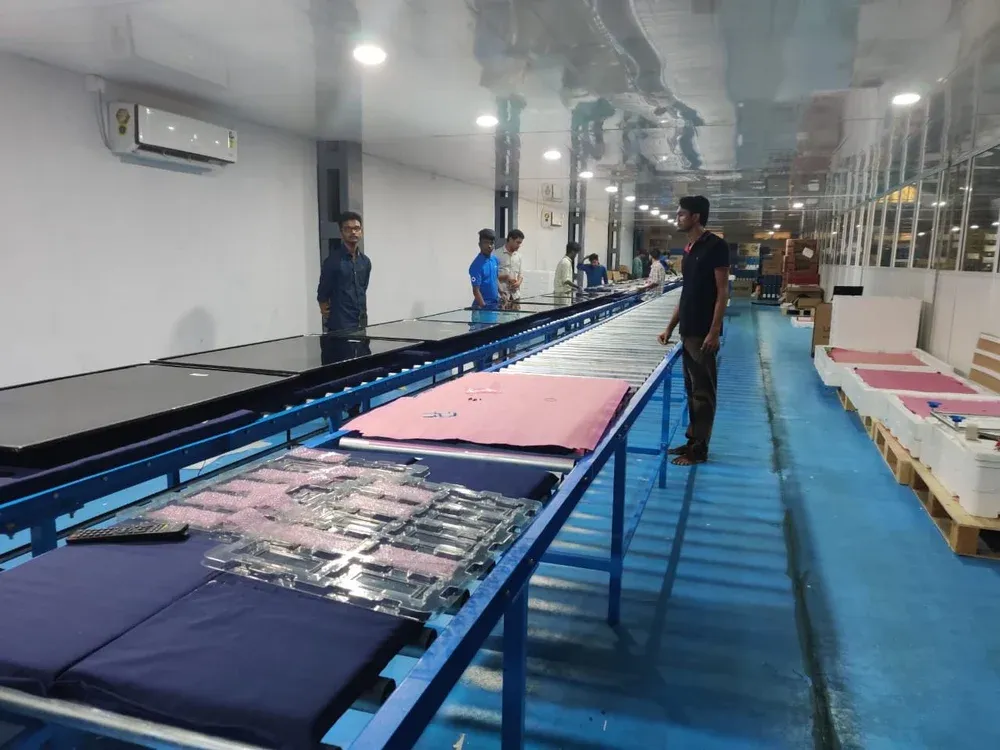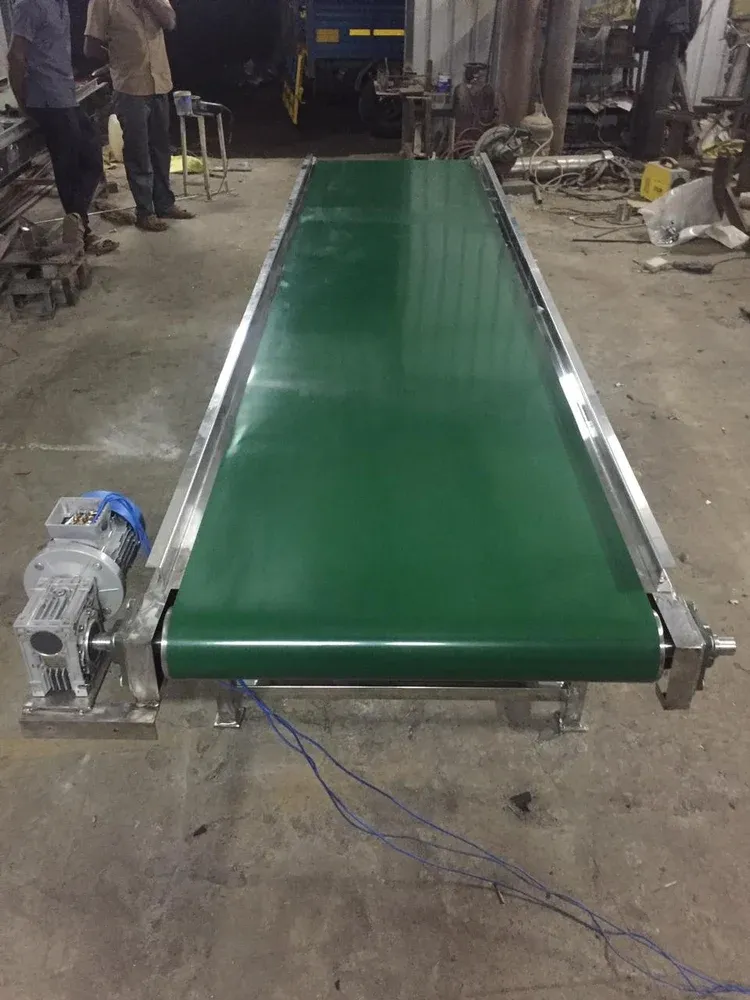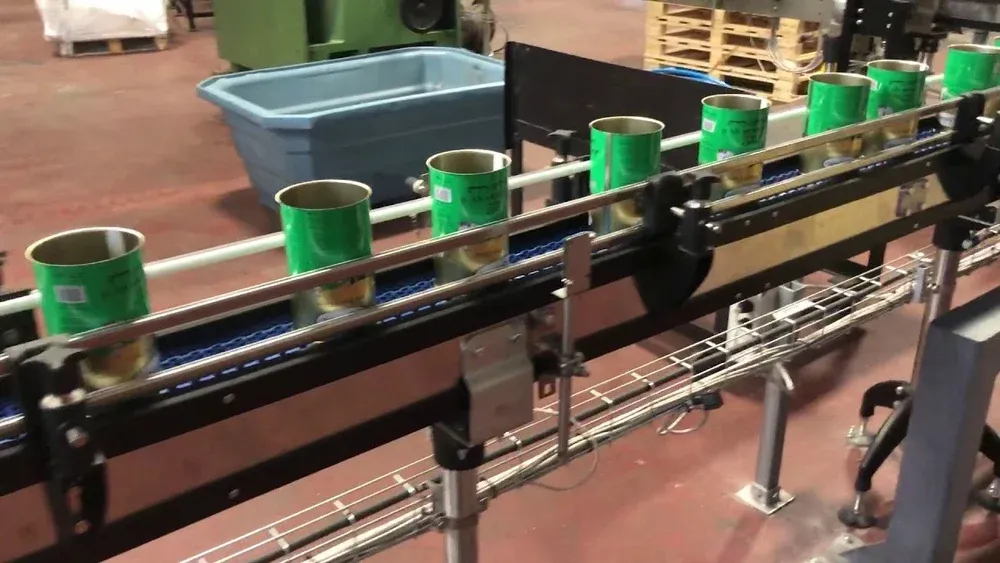Smarter Assembly Line Conveyors for Modern Workflows

Smarter assembly line conveyors are here to revolutionize modern workflows with innovation, speed, and efficiency.
Introduction
In today’s rapidly evolving industrial landscape, efficiency, precision, and adaptability have become non-negotiable. At the heart of this revolution lies the assembly line conveyor. These unassuming yet sophisticated systems have transcended their mechanical origins to become the unsung heroes of modern manufacturing. Let’s explore why smarter assembly line conveyors are shaping the future of production workflows.
Why Assembly Line Conveyors Are the Backbone of Modern Manufacturing
Assembly line conveyors play a pivotal role in manufacturing, serving as the arteries through which production flows seamlessly. They minimize human error, ensure consistency, and accelerate throughput, allowing businesses to meet ever-growing market demands. Without these conveyors, the concept of mass production would crumble, leaving inefficiencies to reign supreme.
The Evolution of Assembly Line Conveyors
From Basic Belts to High-Tech Systems
Early conveyors were rudimentary—a simple belt and pulley system designed to move goods from point A to point B. Over time, advancements in materials, mechanics, and engineering transformed these basic conveyors into highly sophisticated systems. Today’s conveyors are embedded with intelligent features that enable them to think, sense, and adapt.
Key Milestones in Conveyor Technology
From the advent of motorized belts to the integration of automation, conveyor technology has seen remarkable milestones. The introduction of variable speed controls, modular designs, and AI-driven diagnostics has revolutionized the industry, making modern conveyors smarter and more reliable than ever before.
What Makes a Conveyor System Smart?
Advanced Sensors and Monitoring
Smart conveyors leverage sensors to monitor everything from load weight to speed and temperature. These sensors provide real-time feedback, ensuring operations run smoothly and efficiently.
Integration with IoT and Automation
The Internet of Things (IoT) has enabled conveyors to communicate with other machinery in real time. This interconnectedness facilitates automation, allowing conveyor systems to adjust to dynamic production needs without human intervention.
Real-Time Data Collection and Analysis
Data is the new gold. Smart conveyors collect and analyze data to identify inefficiencies, predict maintenance needs, and optimize performance. This ensures that downtime is minimized, and productivity is maximized.
Benefits of Smarter Assembly Line Conveyors
Streamlined Workflow Management
Smarter conveyors synchronize operations across the production floor, creating a cohesive workflow. This minimizes bottlenecks and ensures every component moves in harmony.
Increased Production Efficiency
With adaptive controls and predictive analytics, smarter conveyors enhance production speed and accuracy, allowing manufacturers to meet tight deadlines effortlessly.
Reduced Operational Costs
By optimizing energy use and reducing manual labor, these systems lower operational costs while delivering higher ROI over time.
Enhanced Worker Safety
Smart conveyors are designed with safety in mind, featuring emergency stop mechanisms and collision detection systems that reduce workplace accidents.
Modern Workflows That Demand Smarter Conveyors
High-Speed Manufacturing Lines
Industries with high-volume production demands, such as automotive and electronics, require conveyors capable of keeping up with rapid workflows without compromising accuracy.
Customizable Production Processes
In an era of personalized products, smarter conveyors adapt to varying production needs, handling different sizes, shapes, and configurations with ease.
Multi-Product Assembly Lines
Manufacturers juggling multiple product lines benefit immensely from conveyors that can seamlessly switch between tasks, ensuring efficiency and flexibility.
Features of Smarter Assembly Line Conveyors

Adaptive Speed Control
These conveyors adjust their speed based on production demands, ensuring optimal performance without wasting energy.
Energy-Efficient Motors and Components
Designed with sustainability in mind, smarter conveyors use energy-efficient motors and lightweight materials to reduce their carbon footprint.
Intelligent Sorting and Distribution
Advanced sorting algorithms allow these systems to distribute goods precisely, minimizing errors and enhancing overall efficiency.
How to Choose the Right Conveyor System
Assessing Workflow Requirements
Understanding your production needs is crucial. Identify bottlenecks, analyze throughput requirements, and consider the types of goods you’ll be handling.
Evaluating Space and Design Constraints
Consider the physical layout of your facility. Choose a conveyor system that fits seamlessly into your existing space without disrupting operations.
Future-Proofing for Scalability
Invest in a system that can grow with your business. Modular designs and upgradable features ensure long-term value.
Implementing Smarter Assembly Line Conveyors


Steps for a Smooth Integration
Begin with a thorough needs assessment. Work with experts to design, install, and test the system before scaling operations.
Training Teams for New Technology
Equip your workforce with the knowledge to operate and maintain the new system effectively. Training ensures a seamless transition.
Avoiding Common Pitfalls
Avoid underestimating initial costs or overcomplicating the system. Simplicity often leads to better outcomes.
Case Studies of Success with Smarter Conveyors
Leading Factories Transforming Operations
Companies like Tesla and Amazon have revolutionized their workflows with smarter conveyors, setting industry benchmarks.
Innovative Applications in Various Industries
From food processing to pharmaceuticals, smarter conveyors are redefining efficiency across sectors.
Challenges in Adopting Smarter Conveyors
Initial Costs and Budget Considerations
While the upfront investment may be significant, the long-term savings often outweigh these costs.
Ensuring Compatibility with Existing Systems
Integrating new conveyors with older machinery can be challenging. Proper planning and expert guidance are essential.
The Role of AI in Smarter Conveyor Systems
Predictive Maintenance for Minimal Downtime
AI enables systems to anticipate wear and tear, scheduling maintenance before breakdowns occur.
Dynamic Workflow Adjustments
AI-powered conveyors adapt in real time to changes in production, ensuring uninterrupted operations.
Maintenance Tips for Long-Term Efficiency
Routine Checks and Upkeep
Regular inspections and maintenance extend the lifespan of your conveyor system, ensuring consistent performance.
Signs That Your Conveyor Needs an Upgrade
Increased downtime, rising energy costs, or reduced efficiency may indicate it’s time for an upgrade.
Sustainability and Smarter Conveyors
Reducing Energy Consumption
Energy-efficient designs reduce power usage, aligning with global sustainability goals.
Supporting Green Manufacturing Goals
By minimizing waste and optimizing resource use, smarter conveyors support environmentally responsible manufacturing.
The Future of Assembly Line Conveyors
Emerging Trends in Smart Technology
Expect advancements in AI, robotics, and material science to make conveyors even more efficient and adaptable.
What to Expect in the Next Decade
The next generation of conveyors will likely feature enhanced automation, greater connectivity, and unparalleled versatility.
Conclusion
Why Smarter Conveyors Are Essential for Modern Workflows
Smarter assembly line conveyors are no longer a luxury but a necessity in today’s competitive manufacturing environment.
Taking the First Step Toward a Smarter Factory
Embracing these systems is the first step toward achieving unparalleled efficiency and staying ahead in the modern industrial landscape.